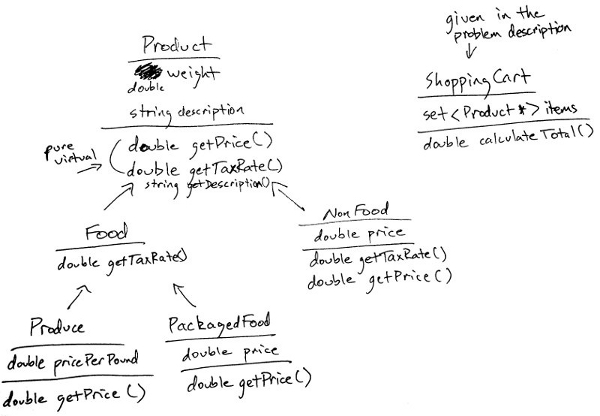Quiz 6 sample
There will be questions about basics of object-oriented programming in C++ (similar to Quiz 5). The questions will cover inheritance, overloading, polymorphism and template programming.
You will also be asked to draw an object-oriented diagram, like the ones we have seen in class and have appeared in the lecture notes on this website. The diagram should represent a good object-oriented structure that could be used to solve a particular problem. The diagram should show several classes, how they relate (subclass--parent class, i.e. inheritance relationships indicated by arrows with the arrow head pointing to the parent class), what are their methods and properties, and which methods are polymorphic. You do not need to indicate which methods and properties are private/protected/public, nor do you need to show constructors. Your diagram does not need to be a formally-correct UML diagram or anything like that; it just needs to show those aspects just mentioned.
Here is an example. Suppose you were asked to represent the following
problem domain with an object-oriented design. Software is needed for
those self-checkout kiosks at modern grocery stores. The software
needs to know how to price various products. All products have a
weight and description, but produce (vegetables and fruit) is priced
by weight and packaged goods have a fixed price. Some packaged goods
are food, and have a reduced tax rate; others are not food, and have
the full tax rate. Produce always has the reduced tax rate. Also, a
shopping cart object needs to keep track of which products have been
scanned and needs to calculate a total price (with tax). The shopping
cart class, named ShoppingCart, can be assumed to already exist. It
has a single private property: a set, or vector, or array (some kind
of collection) of Product pointers (Product*) that represents the
stuff already scanned at the kiosk; and it has a public method
calculateTotal() that finds the total cost of the shopping cart by
using the getPrice() and getTaxRate() methods of each scanned
product in the its collection.
What's a good object-oriented design for this problem?
Here is my solution:
